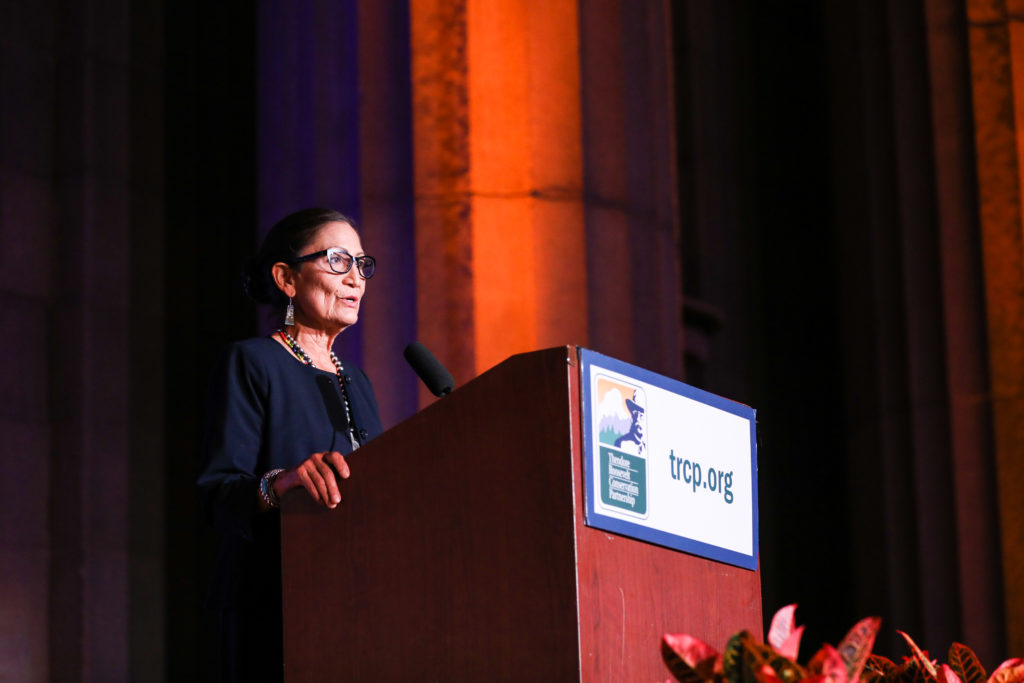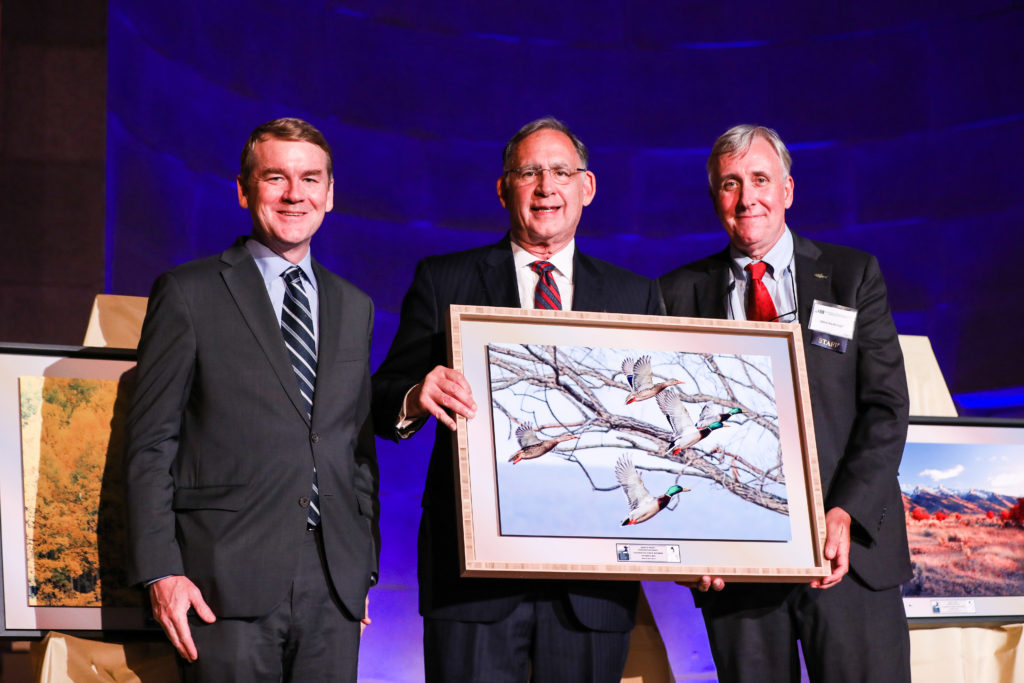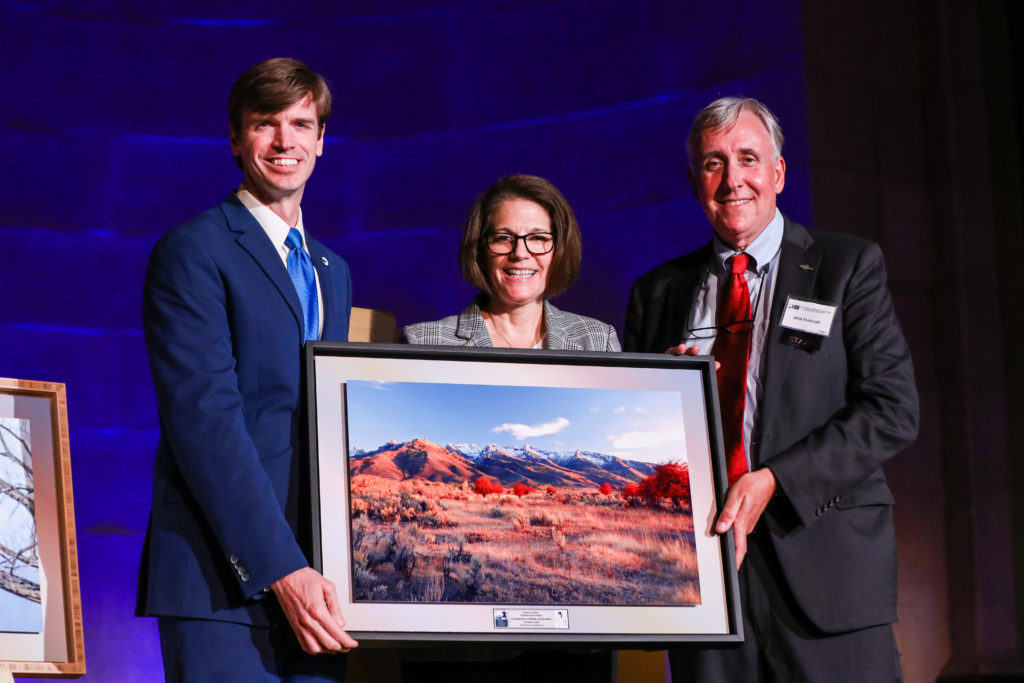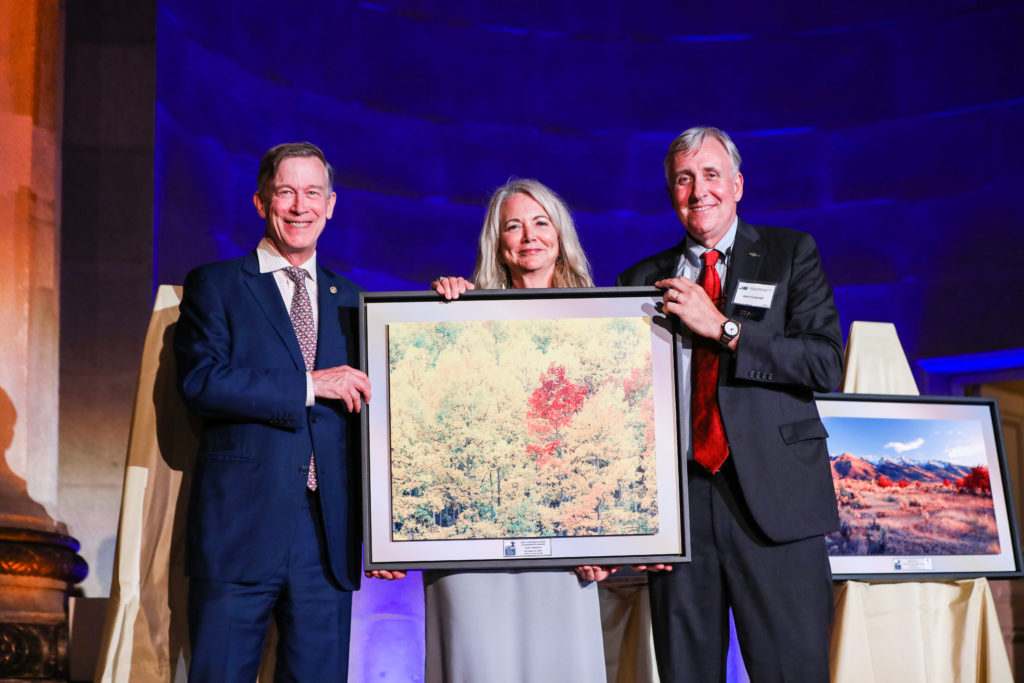MeatEater’s Steven Rinella co-hosts the hybrid in-person/digital celebration with D.C. luminaries, outdoor industry leaders, and TRCP supporters
At its 13th annual Capital Conservation Awards Dinner, the Theodore Roosevelt Conservation Partnership was proud to celebrate the conservation achievements of Senator John Boozman (R-Ark.), Senator Catherine Cortez Masto (D-Nev.), and Kim Jordan, co-founder of New Belgium Brewing Company and founder and Board chair of the Mighty Arrow Family Foundation.
“Like TRCP founder Jim Range, our honorees are pragmatic conservationists, who understand that people are a part of the land and believe we are duty-bound to leave a natural legacy to future generations,” says Whit Fosburgh, TRCP president and CEO, who co-emceed the event from the historic Andrew W. Mellon Auditorium. He was joined via livestream by Steven Rinella, who helped to present the awards and select sweepstakes winners from the MeatEater studios in Bozeman, Mont. U.S. Secretary of the Interior Deb Haaland gave the opening remarks in D.C.

Sen. Boozman has used his long tenure on the Senate Agriculture Committee to enhance important incentives for fish and wildlife habitat conservation on private lands. As ranking member of the Committee and a member of the Migratory Bird Council, Boozman is a strong leader on Farm Bill conservation programs and a champion of wetlands conservation.

Sen. Cortez Masto has led the fight to protect Nevada’s Ruby Mountains from development, engaging a diverse coalition of hunters, anglers, Tribes, and outdoor enthusiasts. She also serves as Chair of the Subcommittee on Public Lands, Forests, and Mining. She was a key supporter of the Great American Outdoors Act and has been a strong proponent of sensible oil and gas leasing reform.

Kim Jordan co-founded New Belgium Brewing, one of most respected craft breweries and innovative businesses in America. Since 1991, giving back has been a part of New Belgium’s guiding principles thanks to Jordan’s leadership. After selling the company to her employees in 2012, she remained an outspoken champion for clean water and the environment, and through the Mighty Arrow Family Foundation, Jordan and her family have become philanthropic leaders in the areas of climate change, sustainable food systems, land and water conservation, and social justice.

“John Boozman, Catherine Cortez Masto, and Kim Jordan understand that conservation is not a partisan issue—it is something that should connect us all as Americans,” says Fosburgh. “We’re thrilled to recognize them for their stalwart commitment to conservation, habitat, and access.”





Just wondering: 1) how much did this shindig cost, and who bore the costs, and 2) how much of that money could’ve gone to conservation?
Unfortunately, we’ve seen, over the years, way too many organizations start seeing success, then it goes to the admin’s head, and they start spending on their junkets, parties, receptions, hosted speakers, outrageously expensive 5-star dining and wine, and lose their focus on what really matters…..
Good question, Curt. Scroll to the bottom of this page for the list of sponsors who paid for the dinner, which netted $500,000 to expand our conservation efforts. We are transparent about how these and other funds are spent on our Financials page, and you’ll see there that we have earned top ratings from Charity Navigator, GuideStar, and the Better Business Bureau Wise Giving Alliance. I hope this helps.